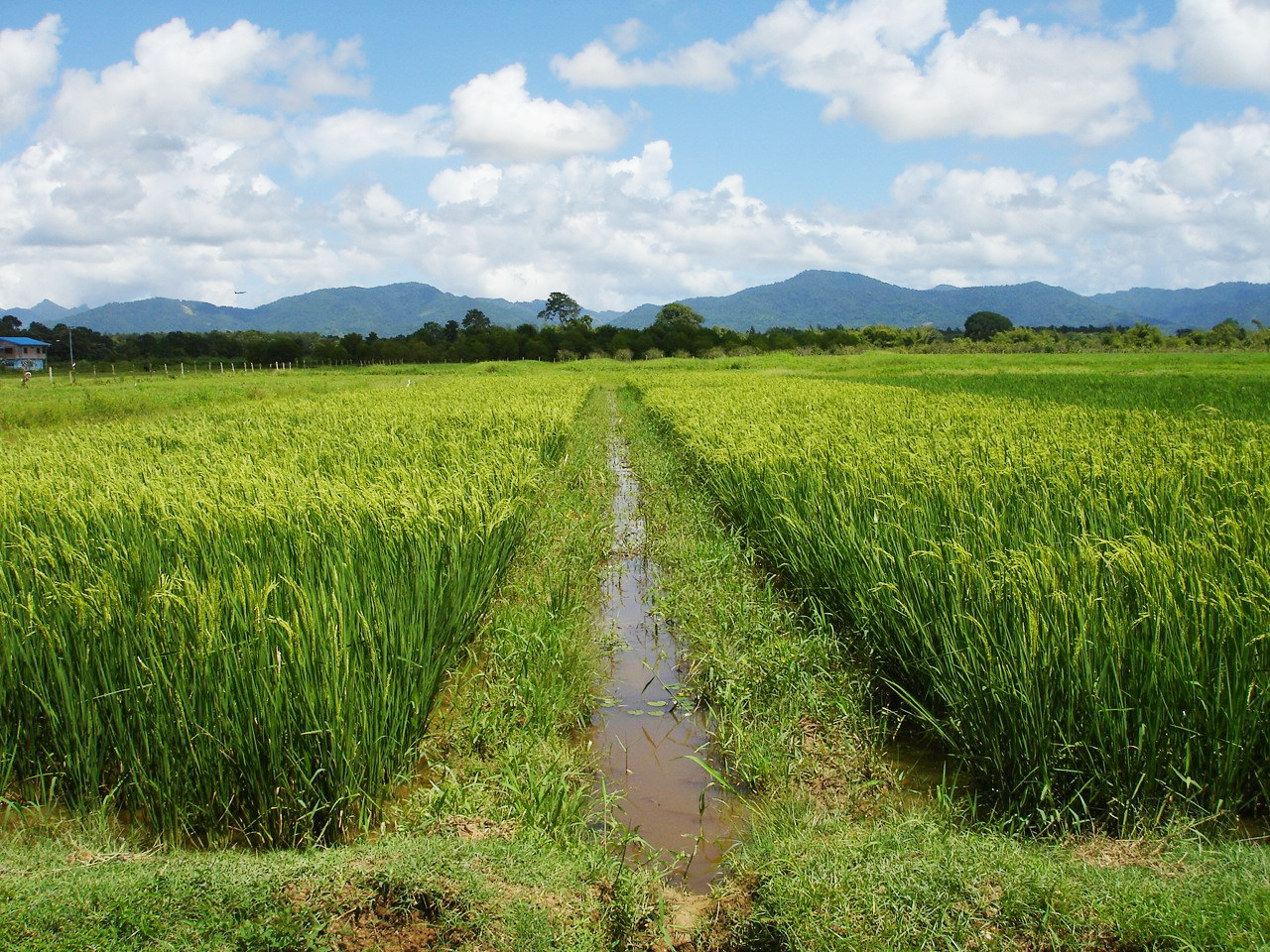
Dr Terry Mabbett speak to Dr Ben Odunlami to discuss the variety of foliar feeding products available for African rice farmers.
ASK ABOUT THE origins of rice and where most of this cereal staple is cultivated and consumed, and you will invariably be told Asia and specifically the Indian sub-continent, South East Asia and what is colloquially called the Far East, comprising China, Japan and Korea. However, only one of two domesticated species of rice (Oryza sativa) is native to Asia, because the other (Oryza glaberrima) is irrefutably native to Africa, sub-Saharan Africa to be exact. O. sativa has been grown in Asia for at least 7,000 to 8,000 years with its first roots in China. However, in real and relative terms Africa is not far behind because O. glaberrima was first domesticated 3,000 to 3,500 years ago in the Inland Delta of the Upper Niger River in what is now modern Mali.
Rice is cultivated throughout Africa where conditions allow and especially in countries along the coastal region of West Africa, including Nigeria, Mali, Cote d’Ivoire, Guinea Conakry, Sierra Leone, and Senegal, and where rice is the main staple for many millions of people.
O. Sativa was introduced into Africa during the 16th century by the Portuguese, with increasing amounts now grown across the continent and in many instances overtaking and replacing cultivation of O. glaberrima. Asian rice was initially attractive due to higher inherent yield, but the profuse vegetative growth of African rice makes the plant and crop better able to compete with weeds. Exciting new opportunities have arisen through the development of genotypes and varieties which are hybrids of O. sativa and O. glaberrima and which combine the best of both. The most well-established and widely known is ‘NERICA’ rice and appropriately ‘translating’ into ‘New Rice for Africa’.
“New opportunities have arisen through the development of genotypes and varieties which are hybrids of O. sativa and O. glaberrima.
However, irrespective of rice type grown, there are substantial constraints on cultivation and production, even when high-yielding hybrid varieties are grown. In fact, lowland rice may only realise half the achievable yield of grain, with variable climatic conditions a major limiting factor. Climate and weather are clearly beyond the control of rice growers, but fertilisation is not, and within the remit of the farming fraternity.
In this context the application and utilisation of the three essential macro-nutrients – nitrogen (N), phosphorous (P) and potassium (K) lead and show the way.
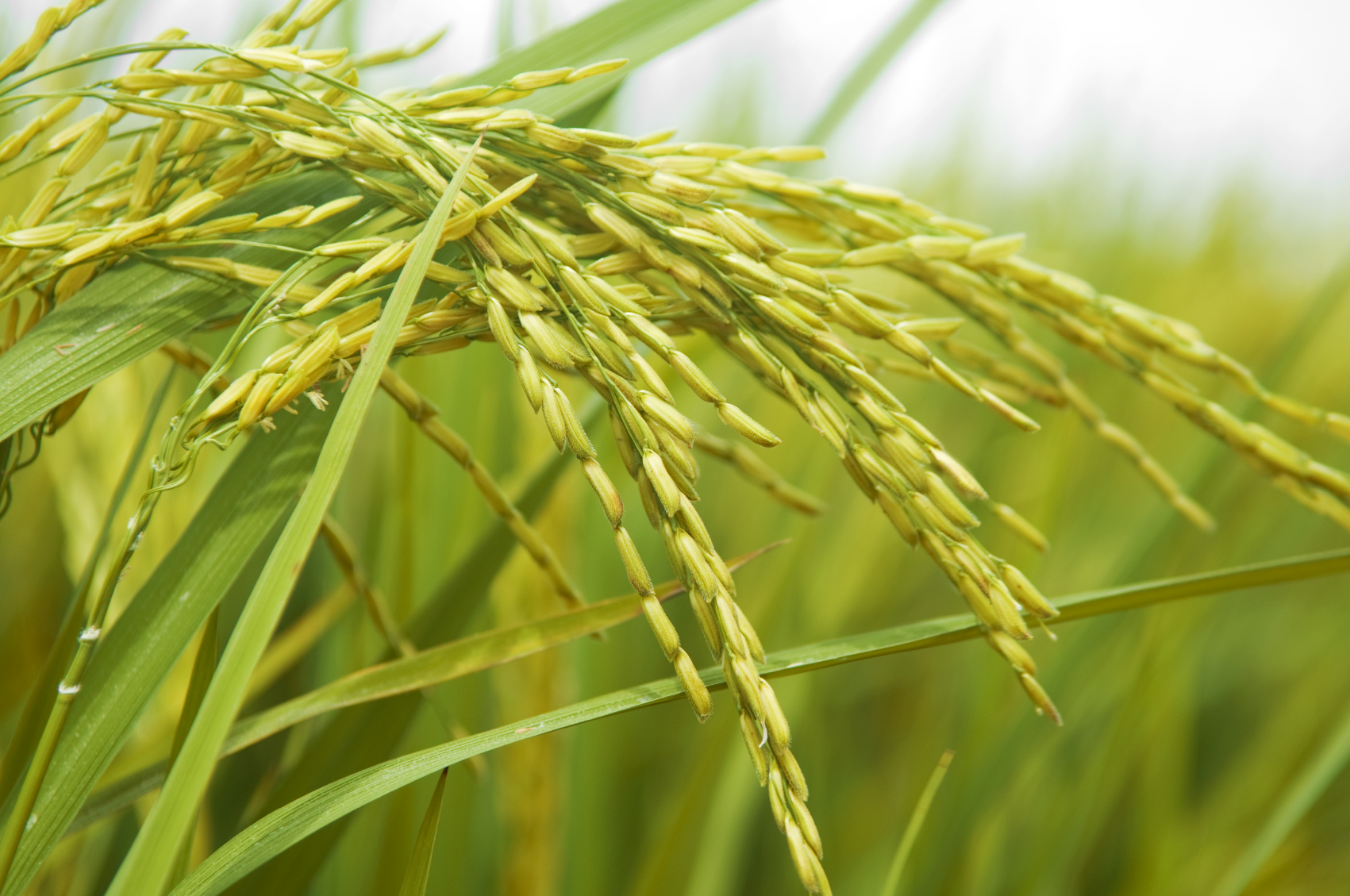
Nutrient products having high contents of soluble zinc, and applied during the vegetative stage, will ensure high-zinc grain of high nutritional quality.
Prime example is the proper placement of solid potassium fertiliser which should ideally raise rice grain yields by up to 20%. But not necessarily the fault of fertiliser per se if not achieved, and down to inappropriate and inefficient application instead.
Similarly, the efficiency and efficacy of solid nitrogen fertiliser is maximised by synchronising application with stages in the rice crop cycle having the highest requirement for nitrogen. And also, phosphorous which is critically important for maximising rice grain yield and necessarily targeted at key stages in the crop growth and development cycle. Phosphorous is required in the early vegetative growth stages of rice plants to promote rapid growth of robust root systems for strong rice seedling establishment and growth.
Lowland rice, unlike other mainstream cereal staples, is grown in soil at varying stages of saturation with 9 cm widely considered to be the optimum depth of water for growing lowland paddy rice. And which clearly presents problems for the sole application of solid fertiliser for optimum rice crop nutrition.
The way round problems of this nature is foliar feeding. Completely soluble nutrient products are dissolved in water and sprayed onto the rice foliage to provide ready-available plant nutrients in exactly the right amounts and at the stage of rice crop growth and development when specific essential nutrient(s) are required.
Foliar feeding enables rice growers and farmers to supply the complete range of nutrients in ready-plant-available form as soluble-liquid or soluble-powder delivery systems mixed with appropriate volumes of water and sprayed onto the crop foliage. Foliar feeding is not a substitute or replacement for base fertilisation using solid formulations but a complementary system offering dual advantages of speed to improve timing in relation to nutrient-demanding stages in the rice crop cycle, and exact placement to maximise uptake and minimise loss and waste. Separate but of crucial importance is foliar feeding as the fastest way to correct plant deficiency of a specific nutrient.
“Foliar feeding enables rice growers and farmers to supply the complete range of nutrients in ready-plant-available form as soluble-liquid or soluble-powder delivery systems mixed with water and sprayed onto foliage.”
Foliar feeding is of particular importance and benefit where soil nutrients such as zinc are not plant-available because they are locked up, in this instance as insoluble zinc phosphate and prevalent in high phosphorous soils. Or nutrients which are not sufficiently plant available, notably calcium (Ca) due to inherent poor mobility of the divalent cation (Ca2+) but nevertheless an essential secondary (meso) nutrient.
The typically narrow leaves of individual rice plants may not seem like ideal templates for impact, retention and deposition of spray droplets, but rice crops present fast-growing and dense crop canopies, filtering out spray droplets to ensure good, collective spray droplet deposition.
From leaf surface to cell
Journey from leaf surface to cell cytoplasm for soluble nutrients applied by foliar feeding is quicker and altogether less encumbered than the more tortuous journey from soil and into the rice plant’s root system. Soluble nutrients in the spray tank are in stable solution unthreatened by inappropriate background pH or counteractive compounds as is frequently so for soil-based nutrients.
The foliar feeding journey is divided into two distinct and separate stages:
-
Movement of nutrients from foliar surface into the leaf tissue via penetration or absorption
-
Movement of nutrients from point of penetration to various sites in the plant by translocation
The two main points of entry are directly via the cuticle or via the stomata. And not without potential barriers due to the hydrophobic (water-repelling) properties of the lipid-rich cuticle, and overall negative charge on the plant tissue which discriminates in the favour of positively charged cations (e.g. K+ and Zn2+) and against negative charged anions such as the phosphate ion (PO4)3- .
Extent and speed of entry via stomata will clearly depend on stomatal density and distribution across the leaf surface and the extent to which stomatal pores are open, depending on time of day and atmospheric conditions including relative humidity. The journey for soluble nutrients applied by foliar feeding is more rapid and less obstructive than for nutrients making their way from the soil solution, into the roots and up into the aerial parts of the plant
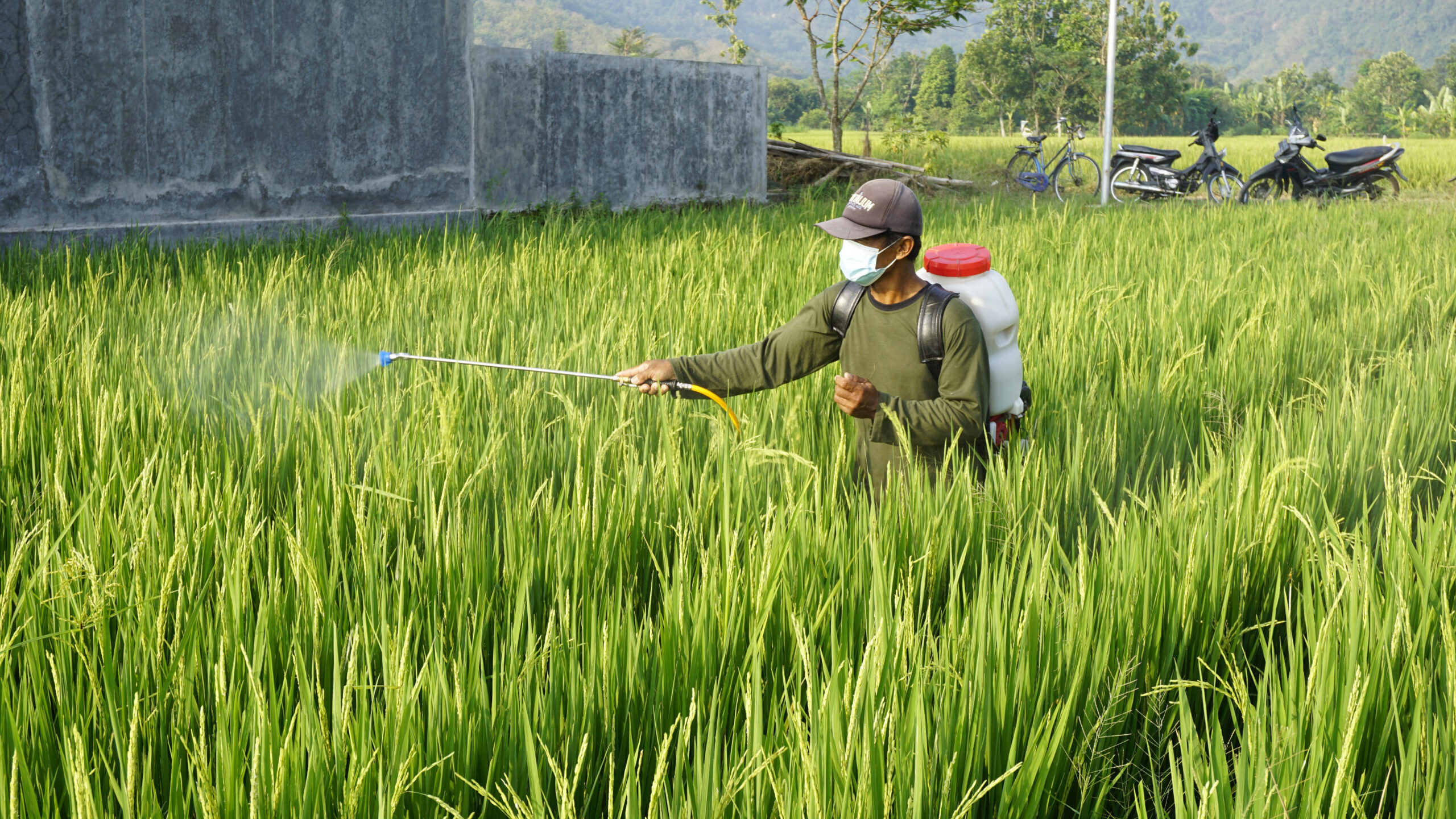
OMEX provides an unprecedented range of soluble nutrient products which collectively bring rice crops to ripeness and readiness for harvest.
What’s in store from OMEX for rice?
African rice farmers require access to a range of soluble products for foliar feeding so I talked with a company who can do just that. OMEX Agrifluids at Kings Lynn in the East Anglian region of England.
OMEX Agrifluids is a R&D (research and development) based company with a product profile spanning the entire spectrum of essential plant nutrients and used worldwide on the broadest range of crops including rice. I spoke with Dr Ben Odunlami, technical sales manager for Africa. First, I asked Ben Odunlami about the African countries supplied and supported by OMEX products. “We sell our products into major rice growing countries in Africa, mainly West Africa but also key rice-producing countries like Tanzania, well south of the Sahara.
I asked Ben Odunlami about OMEX products recommended for rice in Africa. He explained how the synchronisation of individual OMEX products with the key nutrient requirements of rice plants throughout the crop growth and development cycle was the best way to proceed.
“Ben Odunlami explained that synchronisation of OMEX products with nutrient requirements of rice plants was the best way to proceed.”
Zinc seed dressing – the means to an end
“First on the list is OMEX Primer Zinc Bio applied as a seed dressing (3 ml product/kg rice seed), applied at the very beginning of the crop cycle but to ensure rice grain contains enough zinc to maximise nutritional quality of the rice harvest,” said Odunlami. OMEX Primer Zn Bio is a high concentration suspension seed treatment containing 700 g/l (70% w/v) Zn and a natural biostimulant sourced from a marine alga (seaweed). As an essential micronutrient zinc commands a pivotal position in rice plant metabolism and as a constituent of rice grain at 40 – 60 mg Zn per kg for enhanced human nutrition.
Stimulating seedling growth
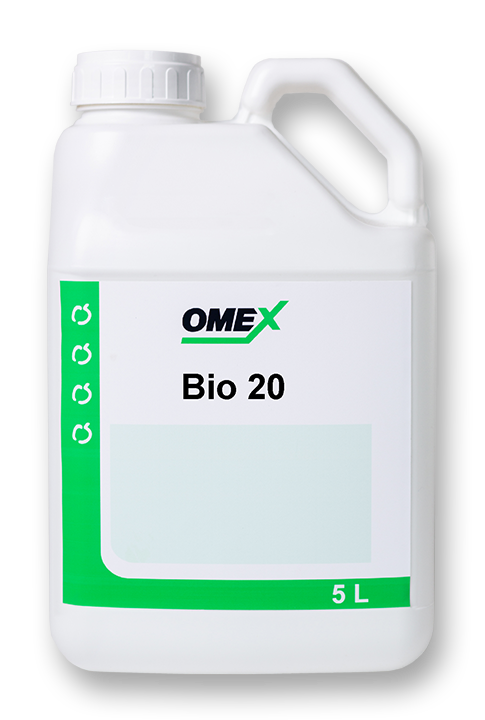 Another OMEX product in which nutrients are boosted by addition of a biostimulant is OMEX Bio 20. “We recommend OMEX Bio 20 for nursery rice seedlings as a foliar spray at 2.0 l/ha,” says Ben. OMEX Bio 20 is a broad spectrum formulation of the three macronutrients (N, P and K), each at 20% w/v and combined with magnesium and chelated micronutrients and synergised with a biostimulant boost from natural seaweed extract. OMEX Bio 20 is tailor-made to supply rice seedlings with a nutrient profile that promotes greater root biomass to enhance utilisation of moisture and nutrients and therefore plant growth,” says Ben Odunlami.
Another OMEX product in which nutrients are boosted by addition of a biostimulant is OMEX Bio 20. “We recommend OMEX Bio 20 for nursery rice seedlings as a foliar spray at 2.0 l/ha,” says Ben. OMEX Bio 20 is a broad spectrum formulation of the three macronutrients (N, P and K), each at 20% w/v and combined with magnesium and chelated micronutrients and synergised with a biostimulant boost from natural seaweed extract. OMEX Bio 20 is tailor-made to supply rice seedlings with a nutrient profile that promotes greater root biomass to enhance utilisation of moisture and nutrients and therefore plant growth,” says Ben Odunlami.
Post-transplant sprays at the rice tillering stage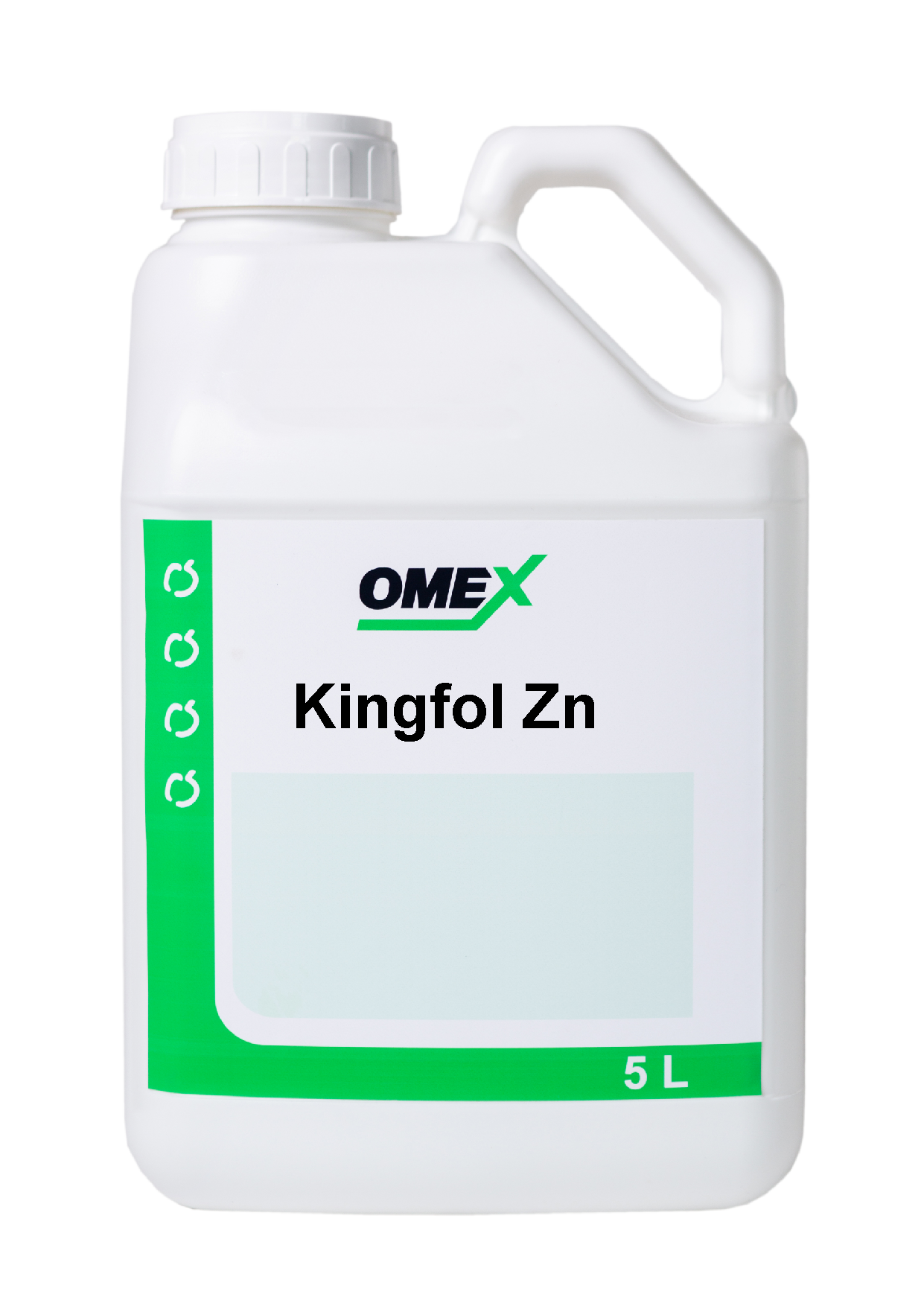
Transplanted rice plants at the tillering stage receive a second ‘shot’ of OMEX Bio 20 (1.0 – 2.0 l/ha) and a further boost from zinc this time using OMEX Kingfol Zn, a flowable foliar applied nutrient formulation containing 700 g/l (70% w/v). Ben Odunlami told African Farming: “ OMEX Kingfol Zn contains zinc oxide as small particles together with enhancers to optimise uptake by the leaves.”
Sulphur and copper in rice
Copper and sulphur are two of the less talked about nutrients in rice but essential, nevertheless.
Sulphur as a significant component of both structural and enzyme proteins has become increasingly important for cereals including rice around the world with increasing efforts to clean up industrial and traffic pollution. Previously, crop plants sourced much of their sulphur from the pollution generated by these activities. What’s more, sulphur deficiency symptoms in cereals including rice are difficult to distinguish from those caused by shortfalls of nitrogen. Ben Odunlami pointed African Farming towards OMEX Sulphomex (87.50% w/v sulphur), rapidly absorbed by the leaves and avoiding the unpleasant dust and caking characteristics of many elemental sulphur products.
The importance of copper as an essential micronutrient for rice is well-established with the consequences of deficiency well-documented over many years. Copper has a range of plant functions including as a co-factor for the activation of enzymes and for phenolic compounds which help to suppress infection by microbial pathogens. OMEX Zynergy provides 2.66% w/v copper plus zinc (4.72% w/v) and sulphur (9.10% w/v) for good measure.
Post-transplant sprays at the panicle initiation and spike emergence stages
Top priority at the crucial panicle initiation and spike emergence stages is broad and balanced applications of nutrients to sustain growth and development, and specific applications of calcium and boron treatments for general all round tissue strength and resilience.
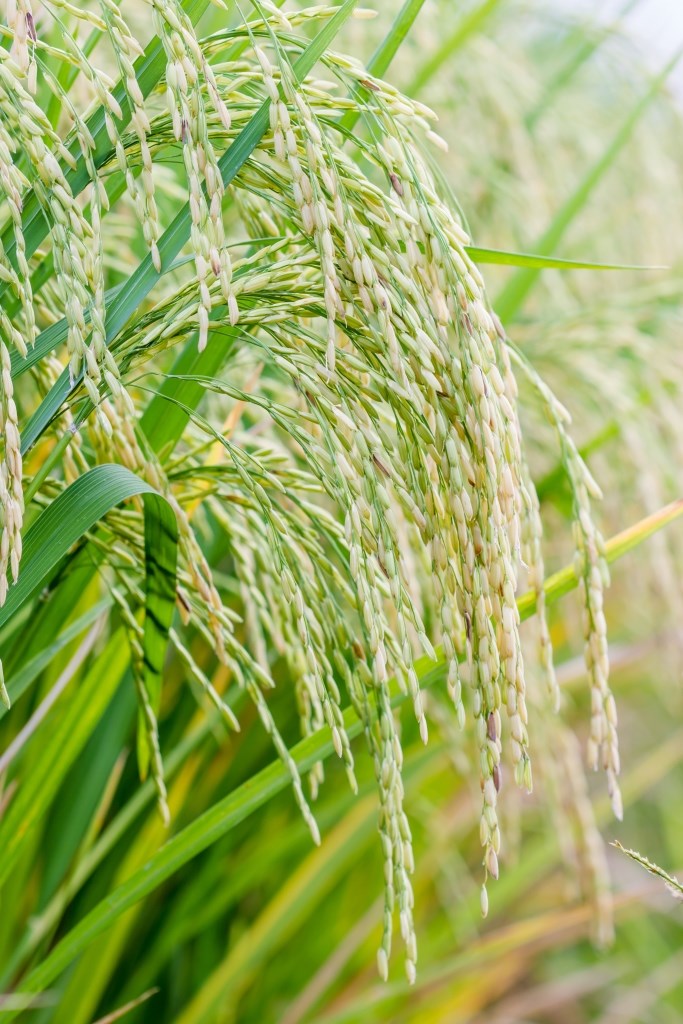
Successful foliar feeding for rice requires farmers to synchronise the application of products according to their nutrient content profile with rice plant requirements related to specified stages in the crop growth and development cycle.
Calcium boosts yield while minimising the frequency of split rice grains and boron plays a key role in the synthesis of cell wall material as well as involvement in the transport of sugars across these cell walls.
“Breadth and balance at the panicle initiation and spike emergence stage is provided by combining five OMEX products.”
Ben Odunlami says breadth and balance at this stage in the growth and development cycle is provided by combinations of no less than five OMEX products – OMEX K41 at 3.0 l/ha (a water soluble emulsion containing nitrogen, magnesium, sulphur with super high potassium (41% w/v); calcium and boron supplied by OMEX CalmaxB (calcium 22.50% w/v, boron 1.53% w/v plus chelated micronutrients, nitrogen and magnesium) at 2.0 l/ha; OMEX Bio 20 and OMEX Kingfol Zn. Last but not least is OMEX Sequential 2 which is promoted in countries where OMEX K41 is not available. OMEX Sequential 2 offers a high level of potassium (40.0% w/v) while maintaining optimal concentrations of all other nutrients.
Soluble nutrients for a novel system of rice feeding
Foliar feeding may be novel for some farmers in Africa but the OMEX programme for rice is well tried and tested. Provided the necessary knowledge and material resources are available and in place farmers can be confident when adopting this modern approach to rice crop nutrition. “Rice farmers in Africa can rest assured that OMEX Agrifluids ‘has their back’ for foliar feeding with a comprehensive range of products able to meet all of their needs,” says Ben Odunlami on behalf of the company.
